2025 Evergreen Tree Price Map: What Buyers in Every State Are Paying
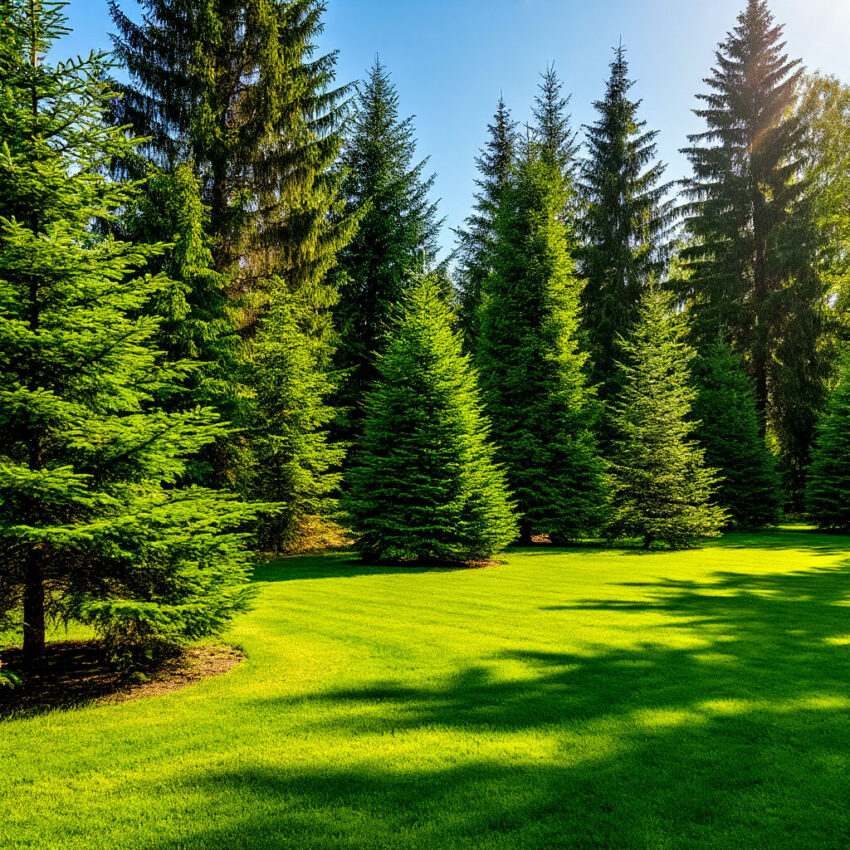
Homeowners across the country often start projects with questions about evergreen tree prices 2025. These specimens remain green all year, offering shade, privacy, and a natural design element for landscapes. The purchase of evergreens is both an aesthetic and financial decision, because totals vary across regions and depend on size, species, and delivery.
Some families spend modest amounts on saplings, while others invest thousands in mature conifers. For many, understanding evergreen tree cost USA means balancing dreams of a lush yard with realistic budgets. Looking at landscaping tree prices by state helps buyers see where money stretches further and where higher demand drives costs up.
Evergreen trees 2025 refer to any conifers or broadleaf evergreens that retain foliage year-round. These trees are commonly used for landscaping, creating privacy screens, or acting as natural windbreaks. Understanding their cost and availability helps homeowners plan budgets and choose species suited to their region. Stick around for a downloadable 2025 pricing checklist—it turns nursery quotes into a clear plan you can actually budget against.

Average Evergreen Tree Prices Across the U.S. in 2025
Nationwide, evergreen tree prices 2025 span a wide range. Small pines may cost as little as $20, while large firs can reach several thousand dollars. Medium-sized specimens, usually between six and ten feet tall, are most common and average $200 to $700. Delivery may be included in this price, but additional charges often apply for long distances or heavy equipment. Shoppers should also consider the cost to plant pine tree 2025, which varies with labor and location.
Nurseries report clear national patterns:
- Pines remain the most affordable, with three-to-five-foot specimens costing $30 to $50.
- Spruces fall in the mid-range, with medium specimens priced $400 to $900.
- Firs are the most expensive, reaching $3,000 for examples taller than twelve feet.
- Rare or decorative hybrids sometimes exceed $5,000.
These figures explain why evergreen tree cost USA can vary so much between cities and states. Buyers in large urban centers pay more due to storage limits and land costs. Rural areas, with more space and easier access to growers, often offer lower prices.
Factors That Influence Evergreen Tree Cost
Several conditions shape evergreen tree prices 2025. Specimen height has a major impact. A two-foot sapling grows quickly and costs little, but a fully developed spruce requires years of care and commands a premium. Variety also matters, since slow-growing or ornamental conifers bring higher prices.
Soil and climate conditions explain why landscaping tree prices by state are not uniform. A fir adapted to the Pacific Northwest thrives naturally, while the same species in Nevada demands extra irrigation. Growers in dry areas often raise prices to cover higher maintenance during cultivation. Importing specimens from far regions also increases evergreen tree delivery cost.
A South Carolina horticulturist emphasizes that using nutrient-rich soil preparation raises costs but ensures healthier growth.
“Using high-quality fertilizers and preparing the soil before planting significantly increases survival rates and impacts the overall cost.”
The main elements influencing totals include:
- Specimen size and age.
- Rarity of the species.
- Distance between grower and buyer.
- Labor costs for planting.
- Seasonal demand during spring and fall.
When families calculate the cost to plant pine tree 2025, they should also consider preparation expenses. Soil testing, nutrient treatment, and pest protection all increase totals. Landscapers note that urban planting often requires permits and special equipment, while rural sites may be simpler but involve longer travel. Each of these details shapes evergreen tree cost USA in ways not obvious from base nursery prices.

Regional Price Differences: East vs. West Coast
A closer look at evergreen tree prices 2025 reveals clear contrasts between coastal regions. The East Coast benefits from long-established nurseries, fertile soil, and consistent rainfall. Specimens there grow faster, and shipping routes are shorter. On the West Coast, heavier demand for privacy screens and longer transport routes drive prices higher.
| Specimen Type | East Coast (avg.) | West Coast (avg.) |
| Pine 8 ft | $250 | $350 |
| Spruce 10 ft | $450 | $600 |
| Fir 12 ft | $900 | $1,300 |
This comparison shows how evergreen tree cost USA can shift by hundreds of dollars depending on geography. For example, a spruce that costs $450 in New Jersey might be $600 in California. Labor shortages and water scarcity on the West Coast add to totals, while plentiful supply on the East keeps prices stable.
The cost to plant pine tree 2025 also differs regionally. In dense cities like Los Angeles, installation may be double the cost of similar work in rural Pennsylvania. Buyers who prioritize local nurseries often save money and reduce evergreen tree delivery cost. Choosing native varieties also avoids the high expense of irrigation and care in dry regions.
Evergreen Tree Installation and Delivery Costs
Planting and transport account for a large share of evergreen tree prices 2025. Proper installation ensures healthy growth and long-term survival. The following video demonstrates essential steps, including digging the planting hole, preparing soil, and initial watering for young trees. Watching this guide can help homeowners understand why professional installation affects overall costs.
Common expenses include:
- Labor fees of $100 to $300 per specimen.
- Delivery charges of $175 to $290.
- Equipment rentals for conifers above twelve feet.
- Permit costs for projects in regulated areas.
Combined, these figures push totals much higher than nursery tags suggest. Many buyers discover that evergreen tree cost USA increases by 50% or more once services are included. Preparing for the cost to plant pine tree 2025 means factoring in both direct labor and indirect expenses like soil conditioning.
To manage evergreen tree delivery cost, buyers should book services early. Coordinating with neighbors to share transport is another proven strategy. Preparing the site ahead of time reduces labor hours, which lowers final totals.
Reputable nurseries often provide flat rates by size, helping families plan without surprise fees. In some cases, delivery can be negotiated into the purchase price, cutting landscaping tree prices by state for larger orders.
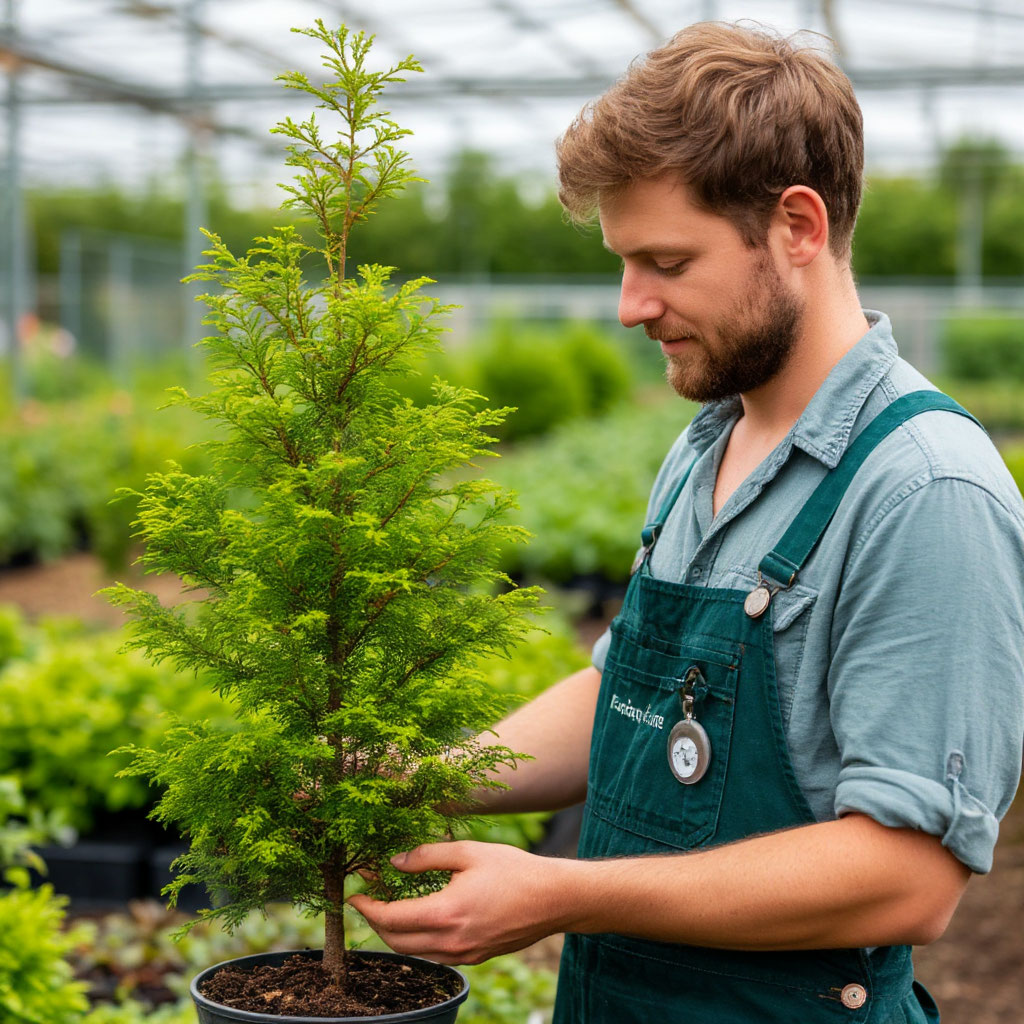
How to Save Money When Buying Evergreen Specimens
Saving on evergreen tree prices 2025 requires a mix of smart timing, thoughtful choices, and practical strategies. Buying smaller specimens reduces the initial cost and allows roots to adapt more easily. Choosing local species reduces care costs. Seasonal sales offer significant discounts for those willing to wait.
Proven savings methods include buying during spring and fall, when nurseries clear out stock. Bulk purchases from wholesalers can lower totals by as much as 40%. Selecting native species also avoids expensive watering schedules and disease treatments. Correct placement in the yard provides shade and energy savings, offsetting the cost to plant pine tree 2025 in the long run.
Managing evergreen tree delivery cost is also critical. Some nurseries include delivery in the price, while others charge separately. Asking about warranties can save money if a specimen fails to survive its first season. Buyers who research local options and compare several suppliers often reduce evergreen tree cost USA significantly. Over time, these choices keep landscaping tree prices by state manageable while ensuring lasting beauty.
Climate and Evergreen Pricing
Climate plays a direct role in evergreen tree prices 2025. Specimens in humid regions such as the Southeast grow faster and cost less. In contrast, arid states like Arizona face higher expenses due to irrigation and careful soil preparation. The extra effort required to raise healthy stock drives up totals.
Buyers should note that climate also influences survival rates. Conifers poorly suited to local conditions may require costly maintenance or may fail altogether. This explains why landscaping tree prices by state differ so much, even for the same species. For instance, a fir that thrives in Oregon may struggle in Nevada, requiring heavy watering and pest control.
Selecting the Right Species for Your Region
Choosing the right evergreen for your yard starts with understanding local conditions. Not all species thrive in every climate, and matching the tree to your environment can save money and ensure healthy growth. The following steps guide buyers in selecting varieties that perform well regionally and require minimal extra care.
- Assess local climate conditions. Check average temperatures, rainfall, and frost dates to identify species that thrive naturally.
- Match soil type and drainage. Sandy, clay, or loamy soils favor different evergreens.
- Consider mature size and spacing. Ensure trees fit the yard without overcrowding.
- Choose disease- and pest-resistant varieties. This reduces long-term maintenance costs.
- Verify availability and nursery recommendations. Local growers often know which species perform best regionally.
An Oregon arborist recommends choosing species adapted to the local climate, as this reduces ongoing care and enhances long-term value.
“Selecting species that naturally suit local climate reduces long-term maintenance costs and increases survival rates, making the initial investment more worthwhile.”
For more detailed instructions on watering, fertilizing, and protecting young spruce after planting, see our guide on spruce tree care.
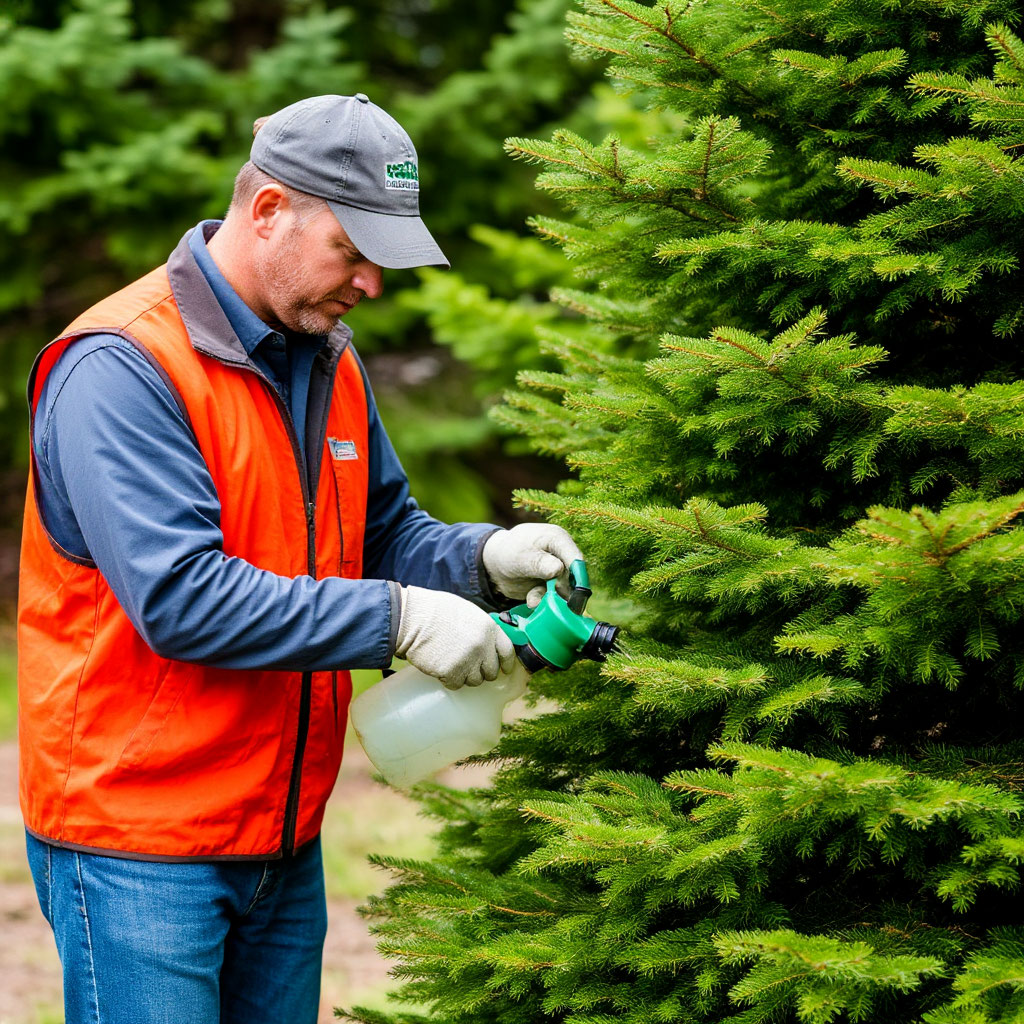
Long-Term Care and Total Cost of Ownership
The purchase price is only part of the expense. Long-term maintenance adds to the total. Watering, fertilizing, pruning, and pest management all matter. For this reason, some families consider overall ownership rather than just nursery tags when reviewing evergreen tree cost USA.
A pine may live 50 years with moderate care, while a fir may demand more intensive maintenance but provide denser coverage. Buyers calculating the cost to plant pine tree 2025 should also factor in these long-term needs. Over time, the value of a specimen extends beyond purchase and delivery. Lower watering bills and fewer replacements can save thousands.
Real Estate and Market Demand
Housing trends directly affect evergreen tree prices 2025. In growing suburbs, demand for privacy conifers rises, pushing prices upward. In rural areas, where space is abundant, nurseries often keep costs lower. City dwellers pay more not only for the specimen but also for the space to store and deliver it.
This is why landscaping tree prices by state often correlate with local real estate markets. A booming housing market drives higher demand for instant curb appeal, while slower markets may stabilize or reduce costs.
Environmental Benefits and Pricing Impact
Beyond beauty, evergreens provide measurable environmental benefits. They improve air quality, lower summer temperatures by shading homes, and act as windbreaks in winter. These features increase demand, which explains part of the premium included in evergreen tree prices 2025.
Eco-conscious buyers often accept higher evergreen tree cost USA because the long-term benefits outweigh upfront spending. Lower energy bills and improved property value compensate for the initial outlay.
Alternatives and Substitutes
Not every project requires tall evergreens. Buyers comparing options may choose deciduous plants or ornamental shrubs. These alternatives often cost less, though they lack year-round greenery. Pines remain the budget-friendly evergreen option, while firs provide the densest screening but at a higher price. Understanding these differences helps balance landscaping tree prices by state and ensures practical choices.
Regional Examples and Case Studies
Consider a homeowner in Texas who pays $350 for an eight-foot pine, plus $250 for delivery and $200 for labor. The total approaches $800. In Minnesota, the same specimen may cost $250, with lower shipping, reducing the final bill to $500. These comparisons illustrate why buyers must calculate not just purchase but also evergreen tree delivery cost.
On larger projects, such as planting an acre with twenty spruces, the gap grows. In the Midwest, the total may be $8,000, while on the West Coast, the same project might cost $12,000. This spread shows the importance of researching cost to plant pine tree 2025 carefully.
Future Outlook for Evergreen Prices
Looking ahead, experts predict steady increases in evergreen tree prices 2025 due to inflation, labor shortages, and shipping costs. Rising interest in sustainable landscaping also increases demand. Online sales may expand availability, but transport challenges will keep prices uneven across states.
For long-term planners, monitoring landscaping tree prices by state can reveal seasonal trends. Early adoption of drought-resistant varieties may increase initial bills but lower long-term maintenance. Delivery will remain a key factor, with evergreen tree delivery cost expected to climb as fuel prices rise.
FAQ
How much do evergreen tree prices 2025 differ by state?
Midwest averages typically range from $150 to $300 for medium-sized specimens. Coastal regions, especially in urban areas, can see totals between $400 and $600. These differences reflect factors such as local supply, transportation distances, labor costs, and climate suitability, which all influence final prices.
Why are native types better for landscaping tree prices by state?
Native species adapt quickly to local soil and climate conditions, reducing the need for extra watering, fertilizers, or pest management. This adaptability not only lowers maintenance costs but also increases the chance of long-term survival, making them a practical and cost-effective choice for homeowners.
What drives the cost to plant pine tree 2025 the most?
The largest factors are specimen size and labor requirements. Taller or mature conifers need specialized equipment and more planting time. Additional considerations, like soil preparation and site accessibility, can further raise costs, especially in urban or hard-to-reach locations. Don’t forget to include the full cost to plant an evergreen tree when you plan a purchase.
How do buyers reduce evergreen tree delivery cost?
Selecting local or nearby nurseries is the most effective way to cut delivery expenses. Coordinating group deliveries with neighbors or timing orders during off-peak seasons can also lower costs. Proper site preparation in advance can minimize labor hours and reduce total delivery-related charges.
Which species suits smaller yards best?
Spruces and certain compact pines provide dense coverage without taking up excessive space. These species grow vertically rather than spreading widely, offering privacy and greenery in limited areas. Choosing slow-growing or dwarf varieties further helps maintain manageable size and reduces ongoing maintenance.
The study of evergreen tree prices 2025 reveals how size, region, and services shape the final bill. Buyers who compare nurseries and time purchases wisely manage evergreen tree cost USA more effectively. Paying attention to landscaping tree prices by state prevents overspending and highlights regional savings. Including the cost to plant pine tree 2025 and transport ensures accurate planning. With smart strategies, any homeowner can control evergreen tree delivery cost while enjoying the lasting beauty and value of evergreens. Ready to compare? Download the buyer’s checklist so hidden costs and vague scopes don’t slip through.
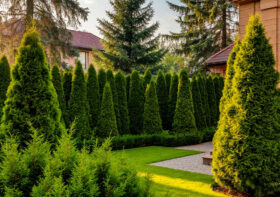
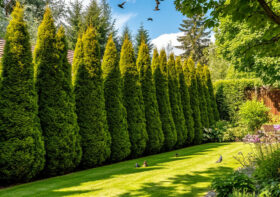

Leave a Reply